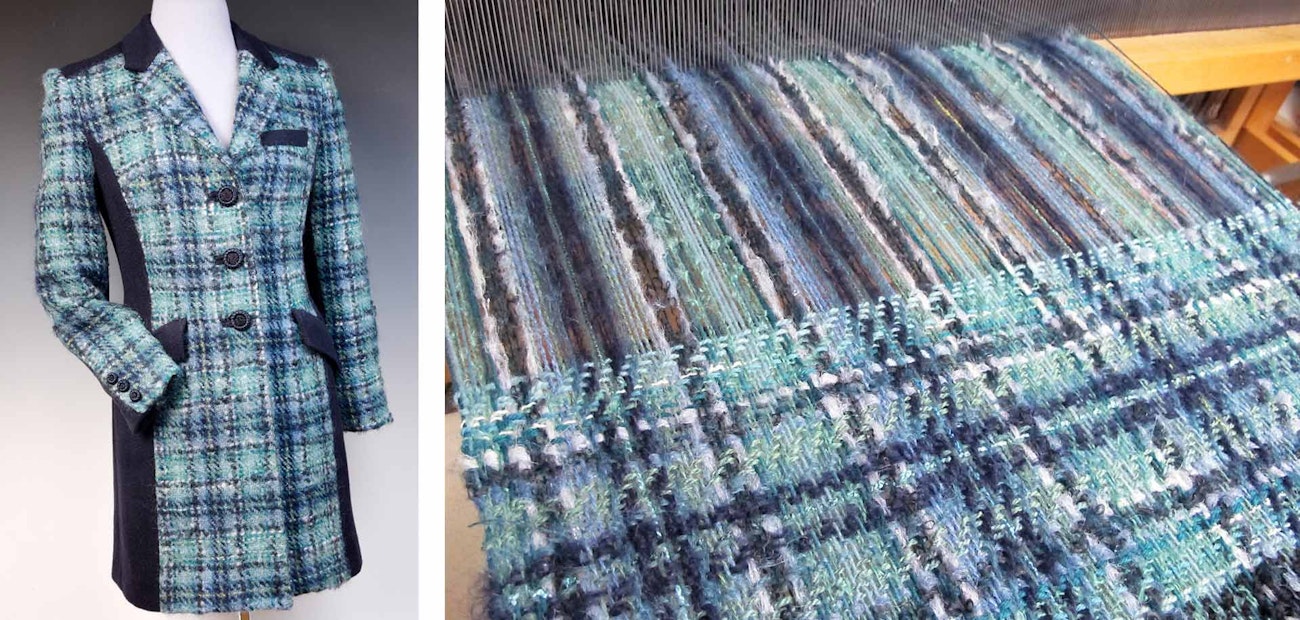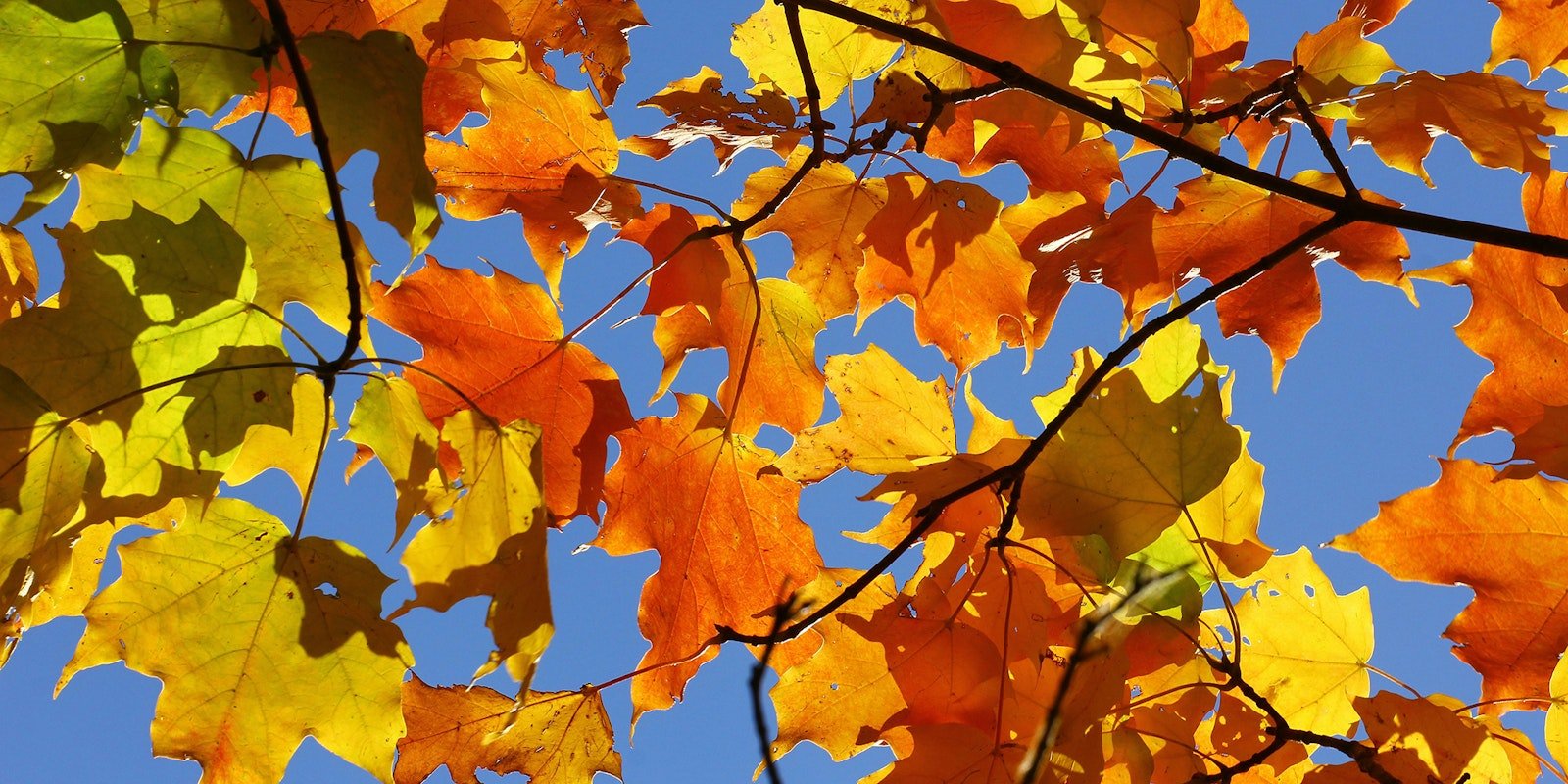Perhaps it’s the crisp autumn air that makes my thoughts turn to plaids.
In the winter ahead, I’ll think of little other than wool or alpaca scarves and throws; in spring, my mind will jump to linen and laces; summer will draw me to crisp textures using colors from the garden.
But as I watch the leaves fall outside my window right now, I‘m considering how I might combine their rich colors in a plaid of some sort. For inspiration, I tracked down some of the wonderful plaid, checked, and tartan projects Handwoven has published over the years. Here are a few recent examples.
Get a closer look! Click any image in the gallery to open it in full-screen mode. Photos by Matt Graves
Checks, Tartans, and Plaids
Those project pictures made me wonder about the differences between checks, tartan, and plaid. Here’s what I learned.
Checks: Equal plain-weave stripes of as few as two colors
“Checks may be considered the most basic form of plaid, with vertical stripes of equal or almost-equal widths in two colors crossed at right angles by horizontal stripes woven in plain weave. ... When devising warps for checks, wind equal(ish) stripes in two colors. Weft color order follows the warp pattern in width, not necessarily with a one-to-one warp-end-to-weft-pick ratio. Picks per inch depend on the tension of the warp and the firmness of the beat.” Read more.
Tartans: More colors in square grids, woven in twill
“All tartans are plaid, but not all plaids are tartan! Both plaids and tartans are woven of stripes that meet at 90-degree angles. Tartans have an identical pattern of stripes running vertically and horizontally, resulting in overlapping square grids. Regular plaids are not necessarily the same in both directions, with variation in color, size, and/or pattern of stripes. In addition, tartan is almost always woven in a two-over-two twill pattern, which forms the illusion of new colors blended from the original ones.” Read more.
If you’re interested in weaving authentic traditional tartans, Mary E. Black wrote about them in The Sett and Weaving of Tartans, as did James Scarlett in The Tartan Weaver’s Guide (out of print), and Linda Tilson Davis in Weaving Tartans: A Guide for Contemporary Handweavers.
Plaids: Checks and tartans, plus everything else
Along with checks and tartans, the plaid category includes other textiles woven with repeated stripes in the warp and weft. What distinguishes the plaids that are neither checks nor tartans? Their stripes can be of equal width or not, they can use variations in colors or sequence, and they can be woven using a variety of structures.
“Non-tartan plaid designs can be freewheeling and stash-friendly. Wind a warp of strips, stripes, and/or bars in any color scheme your heart desires. Most plaid patterns repeat forward and backward from a pivot point, but this is not a requirement.” Read more.
(Note: In Scotland, plaid is an old term for a physical blanket or wrap; we’re using it here to refer to the patterning rather than the textile.)
Designing a Plaid

Left: Daryl Lancaster’s coat made using her bits-and-pieces plaid. Right: On the loom, she beat carefully to keep the plaid square. Photos by Daryl Lancaster
With those categories in mind, I’ve decided on making a freewheeling plaid—although I haven’t settled on any details. Here are some design, color, and project management resources that I’m finding helpful as I dive in:
Because plaids start off as stripes, Sharon Alderman’s suggestions for thinking through stripe design are useful—she delves into even and uneven stripes, proportion, and the effects of symmetry or asymmetry. Her design tools include paper strips, yarn wraps, the Fibonacci series, a bulletin board, and on-loom sampling.
Christine Jablonski explores ways to use math as an asymmetrical weaving design tool.
Daryl Lancaster designed a plaid from “all those small bits of yarn that accumulate: leftovers from knitting projects, small skeins of handspun, or that one special skein given as a gift.” Eventually (and somewhat reluctantly) she thought, “What would happen if I turned them into a plaid?”
Daryl ended up designing and weaving a plaid using those odds and ends, and turning the fabric into a beautiful coat. She gives details here about how she calculated available yarn amounts, settled on a warp length, designed a plaid, warped it, and wove it (while keeping track of all those weft yarns).Deborah Heyman explains how she uses value, contrast, and saturation to combine multiple colors in a design.
Plaid Project Links
Take a closer look at the Handwoven projects in the photos above.
Kathy Broughton’s Plaid About You Throw, from Fall 2025.
Carla Jeanne Hubbart’s Wrap Me In Houndstooth, from May/June 2021.
Gwen Anderson’s Cousins’ Plaid Scarves, from November/December 2023.
Tom Knisely’s Tartan Baby Blanket, from May/June 2021.
Rebecca Logan’s Stormy Skies Towels and Wrap, from Fall 2025.
Véronique Perrot’s Autumn Jewel Scarf, from Fall 2024.
Are you feeling drawn to plaid? Please share your plaid photos on Instagram or Facebook using #handwovenmagazine, or send them to [email protected]. I look forward to hearing from you!
Lynn Rognsvoog is the editor of Handwoven.







